 So, for those of you unaware, this is the second round of Q&A’s collected by asking the public on social media to submit questions- any question at all related to art and artmaking as a career or a simple hobby, I have plucked a few that seemed helpful to you here reading this. I do a lot of interviews but most of them are really specific to the project they are there to promote or the same usual sort of boilerplate questions I get in them overall. This series has been an interesting place to explore questions I don’t usually get or rather get to field and answer publicly the way I often get to in person at a class, a media tour or an open studio event. Each is from a raft of inquiries submitted online and answered as best as these clumsy fingers could muster. This is a yearly and ongoing series exclusive to MUDDY COLORS.
So, for those of you unaware, this is the second round of Q&A’s collected by asking the public on social media to submit questions- any question at all related to art and artmaking as a career or a simple hobby, I have plucked a few that seemed helpful to you here reading this. I do a lot of interviews but most of them are really specific to the project they are there to promote or the same usual sort of boilerplate questions I get in them overall. This series has been an interesting place to explore questions I don’t usually get or rather get to field and answer publicly the way I often get to in person at a class, a media tour or an open studio event. Each is from a raft of inquiries submitted online and answered as best as these clumsy fingers could muster. This is a yearly and ongoing series exclusive to MUDDY COLORS.
Fiilp A
Many artists have been inspired by something or someone at a young age to pursue art. What inspired you?
I don’t know if I was inspired by a particular teacher or person at a young age as much as I was triggered into art by way of stories, tv and movies. We didn’t really live in an art-rich house, growing up in Texas as I did. If we had art on the walls it was just stuff my parents had been given or stumbled into years ago and they never replaced or updated it. Art was just something you put up to fill an empty wall or declare your status or whatever. I did have moments here and there where someone might point out I could draw well or I painted such and such nicely, but overall it wasn’t an environment that encouraged the arts as a real thing worth chasing. I think a big turning point for me was going to the High School for Performing and Visual Arts- part of a chain of magnet schools Houston had to put together around the city, one for engineering, law enforcement, medical studies, etc… It really was fertile soil for me personally in many ways, and there I had teachers that absolutely whipped me into shape, David Sheard, Patricia Zeitoun, in the art department in particular. I happened to be naturally good at the craft of art-making but it took others to really help me take myself seriously and learn to respect and develop it, and those folks of inspiration came from every quarter. I would not be where I am today if it wasn’t for those four years and especially the one where they threw me out of the school so I would fight my way back and value it more.
But, to dig in deeper, I do think there is a shared event, an isolation moment or some kind of halting of the regular distractions of growing up that are behind every artist and creative I’ve met. For my wife, Jen Smith, it was an illness that kept her quarantined and isolated, for others it was anything from a broken leg in summer to a simple case of mono… the important ingredient being something that took us out of the usual cycle of life, and gave us a quiet moment to find the art that was there, and grow it as a response to the derailment. It’s weird, but it has been a consistent story that’s come from any and all creatives I have met in my life. For me it wasn’t the one thing it was the overall persistent discongruity of growing up in a society that was super keen on sports, commerce, and macho men and ladylike women… and I just didn’t connect with most of those attitudes. My bedridden moment was my whole childhood there so I grew a world I wanted to live in as a response to the one I was born into until I could get out, move to NY and make that fantasy world a reality.
E Acosta
How do you prepare to attack a project? Do you warm-up with doodles, sketches before tackling a design? Do you sit down with certain music in background to help set the brain for a work session? Do you look through artwork (yours or others) to get re-inspired?
I’m always curious to know what an artist does to get the creative gears turning before diving in…
Love these inspiration questions- It’s a really good one, and before diving in I’ll warn that it’s one of those things that is always unique to each artist and never a guide for others except as maybe permission-by-example for developing your own tricks. So disclaimer, noted.
I listen to a LOT of music while working, and for inspiration- especially for my writing. For any major project, especially a script, book I’m working on, or anything… I’ll actually make a kind of soundtrack/mixed tape/playlist for the project and grow it playing it on repeat as a trigger to get into the headspace of a story. Some pieces act as music for a scene in my head, others invoke lyrics that elucidate a character, and the genres are all always mixed. In fact what a lot of people claim in the shower-stall as a crucible for inspiration, mine is driving in the car, listening to music through these rolling wooded hills. It’s the movement and the music and the lack of having to fuss with a lot of traffic that makes this work I think. I get most of my story notions this way and use a LOT of voice-notes to write out a scene so I don’t crash the car that’s blossomed in my head this way. The next day casts a harsh light and not all of the notes are worthy but all of them have at least the nugget of something worthy to them to build from later.
For art-making I do a lot of warm up sketches- the recursive drawing especially- where each is created with a single unbroken line, as a kind of uninterrupted seeking of character helps loosen the rusty gears. When I did comics I would write scenes where characters I was developing would hang out or have some kind of conflict to show me who they were. I remember for my first big one, SUDDEN GRAVITY, I have dozens and dozens of comics pages of this doctor and that patient, or two doctors walking down a hall and chatting. Most of these moments never found there way into the book, but became sort of rehearsal sessions for these characters to flex their muscles and show their character that helped me listen to them better when I was writing and drawing them later for the book.
I’ve also found working with a partner is an excellent source of inspiration- whether it’s a closely knitted creative partnership with a co-creator on a book, script or a film thing, or working with creative partner in making records or a major project for a film studio. The conversation, the seeking out of how to navigate budget or other restrictions… the problem solving that comes out of the professional work as a necessity can be a real source of those a-ha moments when sorting how to create something new- especially if its for something older and established. There are times when writing with Ethan in a room where I feel like we’re two kids in a sandbox having that sort of fused moment of co-creating, that kind of perfect simpatico where you are each seeing what the other is thinking… I look back on the work that comes out of those sessions and can always tell when they were at peak performance when I cannot for the life of me recall who thought of what idea. A perfect fusion.
A Oram
Have you ever felt that you’re not good enough and wanted to pack it all in? If so, what pushed you forward?
Just about every single day. One of the things I do talk about when I’m giving a public presentation or a class lecture is this depressing/inspiring truth for most of us: no matter how long you’ve done it, how obvious and proven your professional credentials are… imposter syndrome just gets worse rather than better. I think when you’re young and brazen and arrogantly energetic you skate past those terrible whispers, and mostly to your the service of you really finding new grounds. It’s why I think a lot of creatives have their moments young rather than later on. The chutzpah you carry in at that age, the brilliant naivety silences a lot of the self doubt and questioning that comes from doing this work, and whose voice get louder later as you start to be more self aware and considered. But it never goes away. I know actors with massively successful careers who get nauseous before coming out on a stage or just before a performance or a scene on set. I know musicians who have near nervous breakdowns before every performance no matter how many millions of records they’ve sold. It is a common thing of the self aware artist who doubts. It is neither unique to us or something we can ever escape. The doubts are always there like a dark trauma voice creeping on you from the shadows of your mind, and you just have to learn to live with it. One of my favorite movies of all time is the Bababdook, and largely for having one of the best endings to any movie ever- without spoiling, that show that really… the horror of grief or doubt or the whispers of self-betrayal can never really be gotten rid of… you just have to learn to live with it, make peace with it and even learn to love it. It’s the only way to shrink it and keep it contained in the basement, so that you can leave it there when you leave that space to get about your business of making art.
My way through it simply the tried and true cliche of fake it ’til you make it. We are basically, at the core of our job, making shit up as we go along so it follows that we’ll feel uncertain about it. The irony being that the more uncertain we feel, the better we’re doing because that means we’ve pushed out of the safe tree-lines into the unknown wilderness of the forest beyond. The self doubt is a kind of geiger counter for how far into the unknown we’ve gotten ourselves. The tool for not running back to the shelter of familiar schtick is just that mantra. Lie to yourself. Lie your ass off about how you can absolutely do the thing. Meeting with some world famous director you love on a project? Of course you belong there, you’re awesome and deserve the moment. Creating a painting at a scale you’ve never come close to attempting? You can absolutely do this! Wrote and draw a new story that has never been told before and not sure if anyone gives a shit about it? Of COURSE it’s brilliant and needs to be told. The lies agreed upon are our most powerful tool to combatting the self doubt. The more you pretend at it the more of the thing you’re pretending becomes a true reality. I know intellectually I have no business being where I am or doing the work I am doing, I know this as a fact. The hubris of doing it anyway is also how I do it at all.
C Sylvie
I noticed that a lot of your books center on kids, even when the project isn’t for a kid’s lit audience. You are clearly speaking to something there, would you mind telling us more about that?
This is an excellent question and one that really knocked me off my rails for a bit trying to suss out the why of it. It’s funny because I noticed this too a few years ago, and sort of questioned it as a basic truth and then somehow just shrugged it off and kept going with it as a guiding theme. SUDDEN GRAVITY centers on a young boy in a mental hospital, A PATH AMONG STONES, my first ever story for the Matrix Universe is all about that little girl who sees the agents for what they are, FREAKS OF THE HEARTLAND follows two young brothers finding a path to freedom, Conan was about his childhood and growing into being the mad reaver he became famous for, THE LOST BOY is all about children and childhood, INDEH starts off with Cochise and young Goyaklha and Naiches before they would become the famous native figures they would become, and what is MEADOWLARK if not a story about growing up? I obviously have what any decent therapist would call… a persistent life theme at play. And that doesn’t come to include all the children’s picture books and YA work I’ve done on top of these graphic novels as well. Hell, even my new novel is about a romance between two young people and death. So I acknowledge that I have a thing.
We hold to artificial structures of what our childhoods are and when they end. For most of us they never end, maybe that’s true for us all. I don’t know except to say that I think we never really grow out of our childhoods, no matter our age, and instead, sort of spend our lives as adults coming to terms with our childhoods in whatever capacity we’re able to before we die of old age. SO, many of us are emotionally locked to the time of some childhood trauma at whatever station we find ourselves in our lives. It’s our great pathology. And a society like ours, that is more obsessive with childhood as compared to others, it fuels that fire tremendously. For me, I think it’s a form of therapy for myself to process and understand what I went through as a kid, but also as a means to offer insight to other kids growing up now who read these books and can maybe feel seen or understood in a way I didn’t get to experience growing up. A kind of private unacknowledged mission to rescue and lend comfort as a response to my own childhood failings maybe. I don’t really know… and because it’s not just a question for my therapist, that it’s also something at play in the field of what I do as a creative… it makes me calculatedly uncertain how much it’a actually good for the work to decode outside of the arts, or even by me at all. Adulthood for a lot of us is the corpse of our childhood, almost solely. We just never really escape that hyper vigilante and subjectively impactful time because we are never again as open or vulnerable or as giving and surrendering as we are when we’re kids. What continues to last in the Hobbit and LoTR stories is a small innocent person saving the world of the big from its own evils… if that’s not a wink and a nod to childhood being both the progenator and savior of our adult lives, then nothing is. I am obsessed with childhood because I am a child in a lot of ways. I think it’s what let’s me invent my work, play and make the stories I write, and gives me the permission to spend a day drawing at a table in my room to make sense of the room outside it – the way it did when I was seven or twelve or eighteen. Maybe I’m just more willing to own and embrace it or maybe that’s just my pathology. But it’s definitely a thing and I appreciate you noticing it.
C Griffin
So many questions snuck in… I’ll hit them as best as I can as briefly as I am able… which if you’ve gotten this far along know I am not so brief.
I’m both loyal as hell and indifferent to the brand names of my materials. Don’t get me wrong, I love my Blackwings and my Tombos, Mitsubishis and Staedtler woodless pencils, and I dig my Arches and Moab papers that take the graphite so well and at a budgeted cost. But whatever sparks a delight in using I use. I am sure using super expensive fancy paper is a thing I would enjoy- it’s like cooking where the quality of the ingredients and the pans and utensils you use does actually make the dish better- as a cook I know this to be true. However, I am in artmaking as a notorious neurotic and if the paper’s too fancy I will assuredly self destruct on it out of sheer panic for needing to meet the cost of the paper. So I keep things as affordable as I am able so I can be free to dance without worrying about the suit I’m wearing getting ruined by the act f dancing.
I don’t know… I guess I’d have to admit that the work I did, say for Twin Peaks and The Last of Us, was at least initially one hundred percent fan-art… it just grew into something more substantive either in the case of TLOU, by being brought into the tent to grow more work and art for the game and HBO series, or with TP with doing SO much work for it, that it became it’s own whole new project that was then embraced by the originating principles. I think a lot of fan art maybe lies flat because it never breaches out of the thoughtless adoration of the subject by either copying some famous scene, like Luke with his lightsaber or whatever, or just indulging in making sort of romance fan art for actors one might be drawn to for whatever reason. Most fan art is just that, and in trying to puff up my own balloon… I try to avoid that dangerous cul de sac whenever possible, and I’m able to do that because I’m trained and experienced in making comics and work like this for my day job and for all these years. There’s no small amount of hubris as mentioned above going in as well to sort of decide to rewrite the rules of someone else’s story to illustrate for… which is a mainline core principle of illustrating at all, really. It’s all interpretation. So my work tends to read as more than just walk-a-day fan art because I apply all the same professional principles to the work as a side effect of my day job. I look to see what new story I can tell with the work, what different approach to support a character or a story moment can be, how to illustrate a moment and re-contextualize it’s meaning, etc… You kind of have to cease being a fan and be an executor of the subject to rise above say, doing a cheesecake drawing of Pedro Pacsal with hearts floating around it. I get the temptation, but there’s thirty people a day out there beating you to that punch… I like to try and find another part of the lawn to mow.
I did, in the wayback times, use friends as models- I would host parties at our apt in Brooklyn when I was doing SUDDEN GRAVITY and bring people back into the back part of the room to pose and act out scenes I’d photograph- that book in particular, is a parade of my friend group at the time. FREASK OF THE HEARTLAND featured a lot of modeling by Bill and Charlie Judkins in the roles of Will and Trevor, but over the course of that book as Charlie began to skyrocket in his mid-teen growth spurt, it became very quickly untenable, so most of the last half of that project is without references. Fast forward to INDEH or MEADOWLARK where in the latter it’s almost entirely modeled after my creative pard, Ethan Hawke and my oldest boy Emmett… I never had them sit down and pose or create reference for them. I just didn’t need to at that point. It’s a good resource indeed, and even as I write the prose novel I am currently working on, I have pictures of cryptidian versions of different people I know or even actors I have loved from old films that stand in as reference for a character. It always makes them more fleshed out when you don’t have to invent them wholly from whole cloth, though I have found it can be a burden if overused both for making them fully unique and for not getting stuck seeking to capture their exactness at the expense of their realness. If you look at Meadowlark, and pull any three rando drawings of Jack they will all look a little like someone else… but should all still be Ethan Hawke’s Jack. I never even told Ethan I was starring him in the role until I sent him the first few chapters of the book as drawn, as evidence of how little involvement he had in modeling for the character. But in my head Ethan IS Jack, but Jack is not really Ethan… at least at a core basic, and of course not feckless criminal and shit father Jack is.
S Eatmon
I’ve been told drawing is seeing. How can aspiring artists learn to see better in order to draw better?
Draw from life as much as possible. Draw and paint models, life model sessions, even just sitting in a park and drawing strangers… all of these are essential to learning to SEE beyond the exercise of drawing what’s seen. We often rely too heavily on pictures we draw from, reference photos or set up models…. and those are good to teach us how to duplicate something but it’s a lot easier to translate from one 2-d form to make another one. It’s not an actual challenge to your mind in the same way drawing from a figure in the room is to the depiction of that figure on the page. It’s largely what I get at a lot when I rage out against ever using AI to make your work for you- which is all it ever does. It fails as a helpful tool for artmaking because it denies you the process of finding the form- because like a calculator sorting your tip at dinner… it does all the process for you. As Dave McKean calls it- a result without a process. All art all REAL learning comes FROM process. Full stop. While I don’t use live models and really haven’t drawn from one in decades…. the knowledge and training in my bones from decades prior when I did remain and continue to inform and train me up. I should do it more and I’d be better for it if I did, simply because that is where you conquer new ground and hold it, and there is simply no better way than that to get there.
That all said, drawing like any discipline, is about the time you put into it. It’s about PROCESS, and it’s the only way you learn to get better and get better at seeing. For an artistic, nothing is off limits in terms of data and info you can bring to bear on the work. Study artists you admire, then study who they admire and onward. Digest everything you can, and draw every single day unless unable. There are no shortcuts that really take you anywhere and no tricks that can give you what good solid practice work and labor can bring to bear on your craft. If you’re interested in portraits and character, study faces, why they are the way they are, the different ethnicities, bone structure muscles. You’ll end up doing this all the time, even as you stand in line at the grocery store, noticing someone’s cheeks, or the way the ear connects, a kink in a brow from a scar, freckles all of it. The more you watch it, the more you see it, the more you study and bring it into the work. When you look at say simple minimal work like Chris Ware or Charles Schultz, you’re not seeing the beginning result of drawing like a child does, you’re looking at the simplified reduced end point. Behind all that simplicity are pages of life drawings and studies and an overarching understanding of anatomy and the human from outside and in. Go see 1001 Dalmations and the sketchy linework of the drawing, the distorted anatomy, elongated fingers, comically knobby knees, beaked noses and high placed cheekbones covering tiny flittering eyes, and see the work and understanding of the human form to such a degree it can be then distended and cartooned… Everything you see as an artist has something to teach you about making art, if you look close enough.
A Falleroni
What was the most challenging piece you’ve ever had to create and what made it so challenging? Either you or Birdy can answer.
Birdy is, for some reason, wholly uninterested in answering, so I’ll have to step in while he naps on his back upside down on the studio couch while I write this.
Hard to say really… there’s been a LOT of them. INDEH was a big one- as a white guy from the suburbs seeking to be as authentic and tribally accurate as possible with regards to the native culture of the Apache and the history and characters of that time… every piece was a little scary doing, every paragraph a little scarier for writing it. I think doing that massive grass-leaved piece I executed for Bong Joon Ho’s MEMORIES OF MURDER ranks pretty high. I had literally just come off of doing a bunch of work for the film through NEON for it’s big rerelease, and thought I had left all the best approaches on the field of battle for that project and came in uncertain if I had anything new to say for the Criterion release…. this pieces was that answer, and I did it entirely on spec as a hail mary without letting anyone by my partner in crime, Eric Skillman at Criterion know what I was up to. It took days and days to execute and every day I worked on it I remember legit asking myself why… there was every reason to expect it to be rejected and yet no way to really show what it could be without doing it. It was a massive gamble, tedious as hell, and in the end SO rewarding when Bong flipped out over it, to such a degree he had me print up a full sized 24×36″ giclee print of it for him to hang in his office. That terror-success has initiated a half dozen other times of doing this with out the same success.. so heed the warning in that.
The work for TLOU these last few years has been a crucible of challenges both in needing to pivot away from my own personal work of the series, the ONE WORTH SAVING drawings even if they are the impetus for the work I’m now being hired to execute. This last summer and fall where I had to secretly work on both the campaign art for the second season of the show as well as the final collected version of the PS5 game, without crossing over and even being able to coordinate between them, NDAs being what they are… and then come BACK to the OWS series for a new batch of 22 or so original drawings from it that match or surpass the first series from three years ago…. has been particularly exhausting.
Sometimes the challenge is knowing when to say no to something- One of the premiere graphic novel adventures going around back a few years ago was an adaptation of HAMILTON with Lin Manuel Miranda, and it remains to this day one of the hardest things I never did in my life. The insane amount of money and creative interaction with Lin, the ridiculous fringe benefits for traveling to see the shows around the world and reimagine that juggernaut as a graphic novel without the aids of what makes it such a success- the stars and music and performances. It was and should have been the massive career finale for my time as a graphic novelist and I said no to it more times and suffered panicked sleepless nights from that choice than was ever possible. That I held to that “no” regardless of the ever increased offer…. and instead devoted myself to MEADOWLARK instead, that by no means met the same scale in terms of built in success, and still to this day feel grateful for the choice… will forever confuse and affirm the theory of always listening to your soul when it’s telling you to do something different than from what everyone around you is begging for. It remains one of the greatest challenges of my entire 30+ years.
I think I get the yips when I’m returning to a site of a previous success, like say with Denis’ DUNE work… coming back for Part two gave me the collywobbles something fierce. Having to return to not just meet the level of the first work but to surpass it… and now to have to do it again for the third film… it’s no easy picnic. And it doesn’t always work- My CITIZEN KANE poster was a clunky misfire in a lot of ways because I got so in my head about the level of significance of the film for me- it sabotaged the hubris I needed to do it better. Any project with weight like that, whether it’s doing something for BLUE VELVET or now coming up next ANDOR… it can be a real hard road to run psychologically. You want to do you best so hard you end up trying to control the process to the degree that assures your worst. I am just now working on a new release for a seminal film I have always loved for Mutant, as their very first blu ray film release and it has been months of SORT of getting it right until we finally just broke it open yesterday… and NOW I feel like we have a presentation worthy of the subject and my elevated adoration of the material. I’m in a rare place of privilege to be able to have access to tackling these major projects and events and it can be and is always a bit scary. But scary is where the fun is really. It’s where the light comes from for me, creatively. So I welcome it theoretically… even as I grow my ulcers fretting over my capacity to meet the moment.

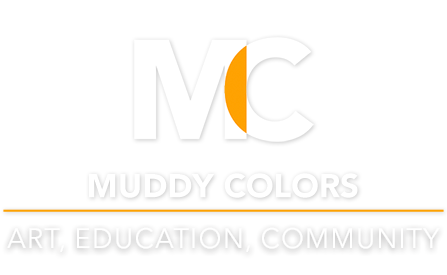

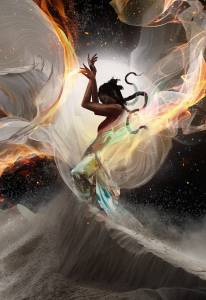



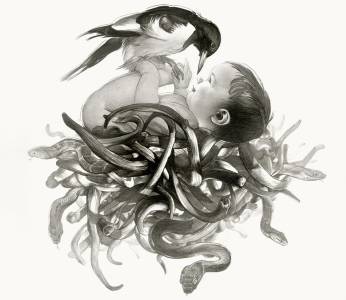

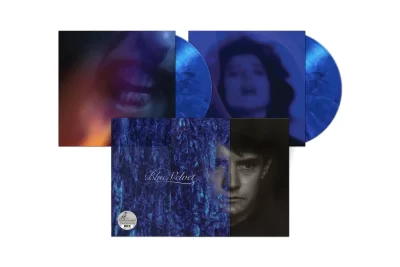

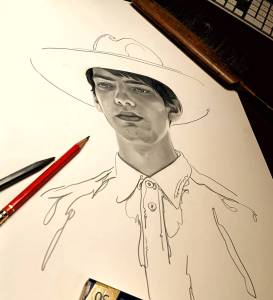
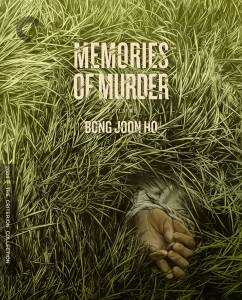


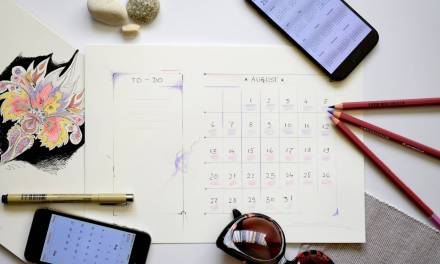
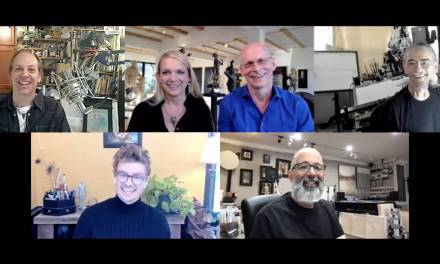
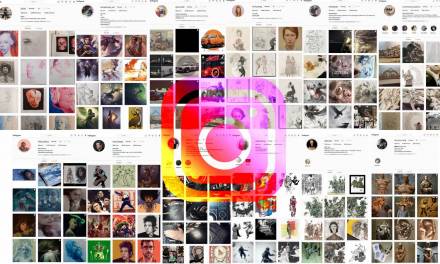
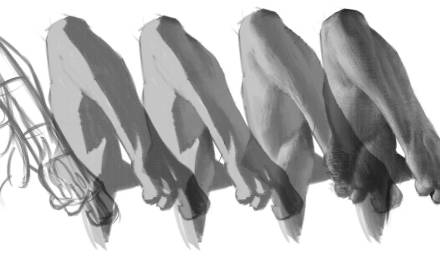
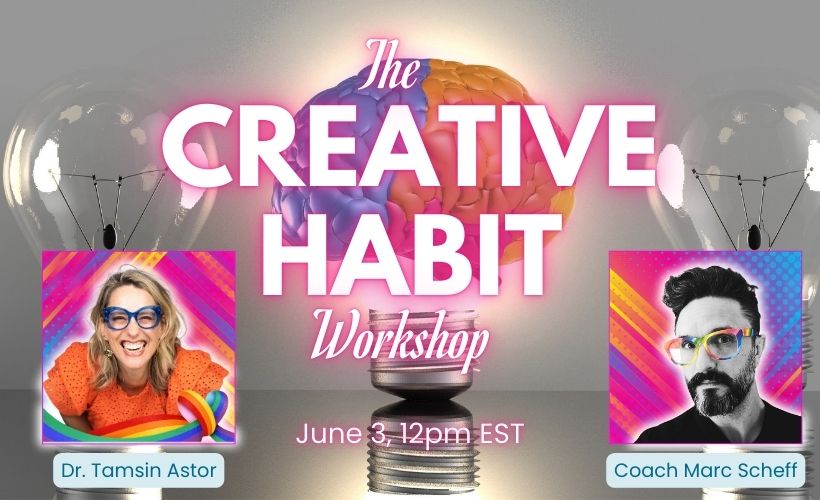
Lots of thoughtful, well articulated statements here. I particularly liked this tidbit:
“imposter syndrome just gets worse rather than better. I think when you’re young and brazen and arrogantly energetic you skate past those terrible whispers, and mostly to the service of you really finding new grounds. It’s why I think a lot of creatives have their moments young rather than later on. The chutzpah you carry in at that age, the brilliant naivety silences a lot of the self doubt and questioning that comes from doing this work, and whose voice get louder later as you start to be more self aware and considered. But it never goes away.”
Thanks for sharing these wise observations!
Hah I can only lay claim to the time and multiple passes over the same errors as wisdom. I think we all get there and see these things as we spend more and more time in the thing we do.But thank you- glad there’s something in here to hang your hat on.
Arthro MD+ is a joint support solution that combines natural ingredients with clinical science to help people manage joint pain, inflammation, and stiffness. It is designed for those who experience discomfort in their knees, hips, shoulders, or back due to age, overuse, or joint-related conditions.
This formula is available in two main forms. One is a fast-absorbing cream that can be applied directly to sore joints or muscles. The other is a dietary supplement in capsule form, which supports internal joint health over time. Both are built around ingredients that have been clinically studied and are known to promote mobility, comfort, and joint flexibility.
I am making over $30k a month working part time. I am a full time college student and just working for 3 to 4 hrs a day. Everybody must try this home online job now by just use this Following link
open here →→ Www.JoinSalary.Com
I get paid more than $120 to $130 per hour for working online. I heard about this job 3 months ago and after joining this i have earned easily $15k from this without having online working skills.
This is what I do…….www.best.work43.com